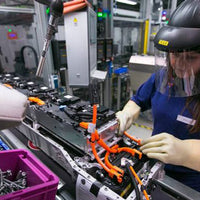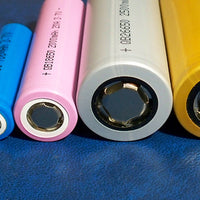Analysis of lithium battery and lead-acid battery application in the data center. Accumulators store specific amounts of energy and release it at the right time. Many data-center equipment professionals are plagued by inconsistent battery performance. Datacenter energy storage reform is imperative, then lithium battery or lead-acid battery which is leading the trend of data center power supply and distribution?
- Floating charge life
The floating charge life of lithium batteries is more than 2 times that of the lead-acid battery. When a lithium battery is floating at 70%EOL@25℃, its service life is up to 15 years. In a good grid quality scenario, it is not necessary to replace the battery as a whole within the 15-year life cycle.
When the lead-acid battery floats at 70%EOL@25℃, the lead-acid life of the industry is up to 7 years. Even in a good grid quality scenario, the whole lead-acid battery needs to be replaced every 3 to 7 years. Cost of manpower and battery.
- Discharge efficiency
Large power discharge of lithium battery can release more capacity, which is suitable for short time large power discharge scenarios of the data center. With the increase of discharge rate, the discharge capacity changes gradually and can reach more than 90%.
With the increase of discharge rate, the discharge capacity shows a rapid decline trend. Therefore, it can only be solved by multi-configuration of batteries to increase the battery investment.
- Floor area and energy density
Compared with lead-acid batteries, lithium batteries can reduce weight by about 70% and volume by about 70%, which is more space-saving and more suitable for space-limited application scenarios.
- Weight energy density (Wh/kg) ratio: 3:1
- Lithium battery: 100~150; Lead-acid battery: 30~50
- Volume energy density (Wh/L) ratio: 3:1
- Lithium battery: 200~300; Lead-acid battery: 60~90
The value of siree lithium batteries to data centers
With the increasing pressure of data center business, the problem of decreased availability of UPS is becoming more and more prominent. A lead-acid battery can be said to be a headache and helpless existence of data center operation and maintenance staff. It is almost demanding for the operation of application scenarios, and the temperature must be kept stable. Support charge and discharge times are small, only about 500 times, but must discharge regularly, the key is the battery's overall life is very short, basically only about 6 years.
Compared with lead-acid batteries, the UPS with lithium batteries can occupy 50-80% less space and have a service life of more than 15 years. Although there has been a view in the industry that the deployment of a power system with lithium-ion batteries would significantly increase the cost of construction. Although lithium batteries are still about twice as expensive as lead-acid batteries, their advantages are still significant given their technological advantages and full life cycle value. And the spread between the two is likely to get smaller in the future.
Lithium batteries can charge and discharge more than 8,000 times while storing energy. Also, the lithium battery after the factory will have its management system, do not need later human intervention maintenance. Lead-acid batteries, on the other hand, are completely blank. Lithium batteries bring longer life, lighter weight, smaller size, and greater flexibility to modern data center providers.
The lithium battery can be charged and discharged quickly many times, as well as the characteristics of high density. It can store electricity in the municipal electric wave valley. When the peak of electricity consumption comes, the stored power will be transmitted to the data center, to reduce the peak pressure of the power grid. This feature, whether to the green energy-saving and PUE will have a greater contribution, can meet the government and data center users for PUE and TCO both requirements, relatively, is a win-win situation.
The large volume and heavyweight of the traditional lead-acid battery will be the biggest obstacle to the improvement of the power density of the data center. The lithium battery has become the best choice to replace the traditional lead-acid battery due to its high energy density and small size. Datacenter surveys show that 10 percent of data centers already use lithium batteries as backup energy. Inevitably, the entire UPS industry will fully replace lead-acid batteries with lithium batteries. It is only a matter of time.
As lithium battery technology matures and costs are optimized, UPS will quickly switch from lead-acid to lithium batteries, allowing data center managers to replan the gray and white areas.
In the future, lithium batteries will not only be used as a short backup delay of UPS, but its powerful cyclic discharge performance will be extended to more. Let's wait and see the technological revolution brought by this new energy for the data center. It can be predicted that lithium batteries will be a dusting in the future development of the data center.








0 comments